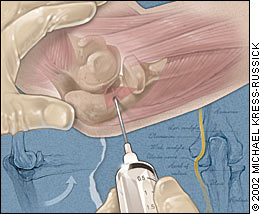
Am Fam Physician. 2002;66(11):2031

This issue features a “Medicine and Society” commentary on the adverse effects that children may have when witnessing violence in their home (see page 2052). Written by Melissa M. Stiles, M.D., associate professor of family medicine at the University of Wisconsin–Madison Medical School, the article goes beyond addressing the effects of domestic violence on the primary victim to explore the effects of domestic violence on secondary victims, such as the children who live in households where partner abuse occurs.
Dr. Stiles notes that an array of age-dependent negative effects may occur in children who witness domestic violence, including cognitive, behavioral and emotional effects. Children who see violence in their home may have the same sorts of psychologic effects as children who are abused. These effects include sleeping and feeding problems in infants, separation-stranger anxiety and regressive behaviors in preschool children, aggressive and regressive behaviors in school-age children, and delinquency problems in adolescents (see table on page 2055).
According to Dr. Stiles, family physicians are in an ideal position to address issues of domestic violence. Family physicians can play a role in prevention, identification, and response in domestic violence situations. Ideally, prevention should begin as part of prenatal counseling and include evaluation of parents' methods of resolving conflict in the household and their responses to anger. Parents should be educated about the effects that exposure to violence has in children, including the negative consequences of witnessing violence in the home or even of watching violence on television.
When screening for domestic violence, physicians should look for both primary and secondary victims of abuse. Well-child and adult health maintenance examinations offer opportunities to screen for family violence. Dr. Stiles offers a number of screening tools and tips for identifying domestic violence and differentiating underlying causes of a child's emotional or behavioral problems.
If domestic violence is identified, the physician should make documentation in the mother's record rather than the child's record, because the perpetrator might have access to that record. Although state laws mandate reporting of child abuse, witnessing domestic violence is not defined as a mandatory reportable form of child abuse. Among other measures, victims of domestic violence should be offered community and national resources (see table on page 2058).
For more information on screening and treatment recommendations for domestic violence, please see this issue's “Clinical Briefs” (page 2168). The Family Violence Prevention Fund has developed a resource booklet on domestic violence for physicians (available at www.endabuse.org/ health or by calling 888-RX-ABUSE). The booklet was developed in partnership with the American Academy of Family Physicians, American Academy of Pediatrics, American College of Obstetricians and Gynecologists, Child Witness to Violence Project and Boston Medical Center, and the National Association of Pediatric Nurse Practitioners.